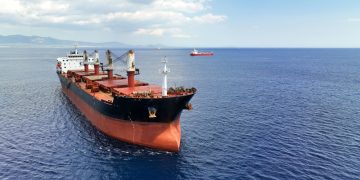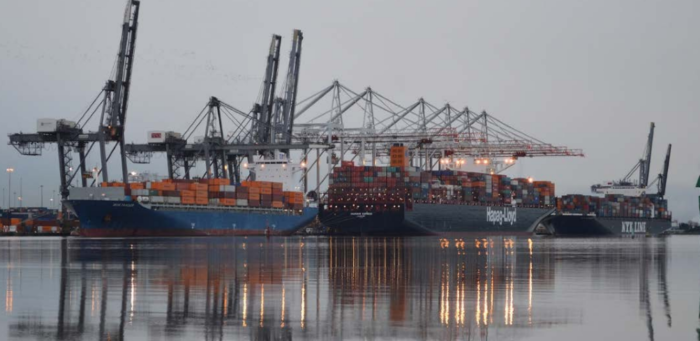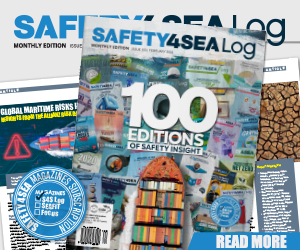The UK MCA issued a report for port operations, providing a detailed guidance on a number of issues relevant to the management of ports and other marine facilities, as a supplement to the Port Marine Safety Code. The publication is designed to provide general guidance and examples of how an organisation could meet its commitments in terms of compliance with the Code.
The guidance covers the following areas:
- The Legal Background
The duties of a harbour authority are of three kinds: statutory duties, imposed either in the local legislation for that authority or in general legislation, general common-law and fiduciary duties.
- Accountability of the Duty Holder
Section 1 of the Code states that the ‘duty holder’ is accountable for the organisations compliance with the Code and its performance in ensuring safe marine operations.
-The duty holder is accountable for safe and efficient operations. The duty holder should make a clear published commitment to comply with the standards laid down in this Code.
-Executive and operational responsibilities for marine safety must be clearly assigned, and those entrusted with these responsibilities must be appropriately trained, qualified and experienced and answerable for their performance.
-A ‘designated person’ must be appointed to provide independent assurance about the operation of its MSMS. The designated person must have direct access to the duty holder.
- Consultation
Safety in the port marine environment is not just a matter for the organisation, its officers, contractors or its authorised pilots. Users are also required to minimise risk to themselves and others. Substantial objectives of ‘consultation’ should be:
-Conveying to employees, users or others what some of their responsibilities are regarding their work or activity in the harbour or facility.
-Understanding and acceptance of the Duty Holder’s role and responsibility under the code as well as the duty holder’s policies and procedures.
- Risk Assessment
SMS have to be maintained as a continuous cycle of review and re-assessment. Risk assessment is therefore recurrent. When an organisation adopts formalised safety management it is likely to begin with a new and comprehensive assessment of risk. This will always be a starting point and will establish a basis for regular review and the ongoing development and evolution of the port’s marine SMS.
- Marine Safety Management Systems (MSMS)
The key elements of successful safety management are:
-effective safety policies setting a clear direction for the organisation to follow;
-an effective management structure and arrangements in place for delivering the policy;
-a planned and systematic approach to implementing the policy through an effective safety management system;
-performance is measured against agreed standards to reveal when and where improvement is needed;
-the organisation learns from all relevant experience and applies the lessons.
- Emergency Preparedness and Response
UK ports should put into place procedures and emergency plans when dealing with fumigated cargoes. Communication and cooperation of all involved parties on ship and shore are important in providing effective safety for those who might be affected by exposure to fumigants and other toxic substances.
- Conservancy
A harbour authority has a duty to conserve the harbour so that it is fit for use as a port and also has a duty of reasonable care to see that the harbour is in a fit condition for a vessel to be able to use it safely. Harbour authorities should provide users of the harbour with enough information about conditions in the harbour such as depths of water, local Notices to Mariners, etc. Harbour authorities have duties and powers as local lighthouse authorities (or providers of local aids to navigation); and specific powers in relation to wrecks.
- Management of Navigation
The general principles in relation to the management powers of harbour authorities are as follows:
-Ports have byelaws and directions, which every user must obey as a condition of his or her right to use the harbour.
-Harbour authorities have a duty to make proper use of the powers to make byelaws, and to give directions (including pilotage directions), to regulate all vessel movements in their waters.
-These powers should be exercised in support of the policies and procedures developed in the authority’s safety management system, and should be used to manage the navigation of all vessels.
-Harbour authorities should have clear policies on the enforcement of directions, and should monitor compliance.
-Powers of direction should be used requiring the use of port passage plans in appropriate cases – whether vessels are piloted or not.
- Pilotage
Chapter 5 of the Code refers, amongst other things, to the main powers and duties which harbour authorities have to provide a pilotage service. It says that the use of these powers should follow general principles:
-Harbour authorities are accountable for the duty to provide a pilotage service; and for keeping the need for pilotage and the service provided under constant and formal review.
-Harbour authorities should therefore exercise control over the provision of the service, including the use of pilotage directions, and the recruitment, authorisation, examination, employment status, and training of pilots.
-Pilotage should be fully integrated with other port safety services under harbour authority control.
-Authorised pilots are accountable to their authorising authority for the use they make of their authorisations: harbour authorities should have contracts with authorised pilots, regulating the conditions under which they work – including procedures for resolving disputes.
- Marine Services
-An authority’s SMS should cover the use of harbour craft and the provision of moorings.
-The formal safety assessment should be used to identify the need for, and potential benefits for safety management of harbour craft.
-The authority should ensure that harbour vessels or craft which are used in the harbour are fit for purpose and that crew are appropriately trained and qualified for the tasks they are likely to perform.
-Byelaws and the power to give directions are available for these purposes
- Towage operations
Procedures for towage in ports, harbours and at terminals need to be developed, managed and regularly reviewed by harbour authorities, tug operators, pilots and ship owners, to ensure a safe and efficient service. Procedures should include responses to emergencies. Good communication and team work between all parties is essential.
- Professional Qualifications and Competencies for Port Marine Personnel
-Systems developed by an authority with the aim of making best use of appropriate powers are likely to fail unless those people assigned any role in the system are competent and trained to nationally agreed standards.
-The foundation to these standards is an understanding that securing port safety is a team operation demanding an appreciation of the work of other specialists.
-Harbour authorities should assess the fitness of all persons appointed to positions with responsibility for the safety of navigation.
-Harbour authorities should adopt a training strategy that develops a shared understanding of their safety management systems and promote the involvement of port users in training programmes.
- Accident Reporting & Investigation
It is essential that the SMS addresses the potential for incidents to occur and to provide instruction and guidance on any investigations that may be required as a result. The duty holder can be assured that their obligations for compliance have been addressed by ensuring that a robust, rigorous, investigation has been carried out.
Explore more herebelow:



































































